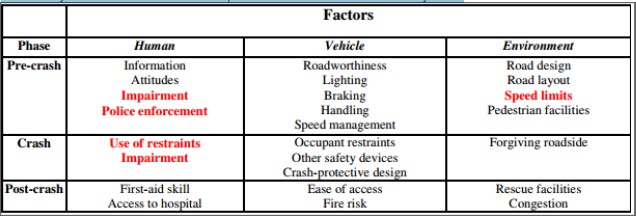
Identifying the sources of risk is the most critical stage in your risk assessment process. You need to do this to manage the sources for pro-active risk management. The better you understand the sources, the better the outcomes of the risk assessment process, and the more meaningful and effective your management of these risks will be. The appropriate risk identification method will depend on:
- the application area (i.e. the nature of activities and the hazard groups)
- the nature of the project
- the project phase
- resources available
- regulatory requirements, and
- client requirements as to objectives, desired outcome and the required level of detail.
(Berg, 2010)
Moreover, hazards and risks must be mapped to actual processes and activities (Domokos, et al., 2015).
Instead of moving directly into hazard and risk identification after establishing the context, your risk assessors should look more broadly at potential risk events than their knowledge and experience might suggest otherwise. It is helpful to draft a hazard or threat inventory that can be used together with the production process, such as in mining, being examined to develop a set of risk events for analysis. The scope can extend beyond safety, environment and community to include government relations or commodity price changes (Australian Government, 2016).
You will use all information you’ve obtained for understanding key risk events and their frequency and severity during risk identification in the subsequent risk analysis and evaluation. Most risk information is obtained from experienced operators and subject matter experts who jointly understand the activities that will be carried out and their potential impacts on the business and the assets in the wider environment. Information on broader community impacts from experts and external stakeholders is most often obtained during specifically convened workshops and subsequent ongoing follow-up and consultation with experienced operators, specialists and their teams (Australian Government, 2016).
There are many different ways to identify hazards, but three common and effective ways to systematically identify existing hazards are (Noth, 2012):
- Examining the specific areas of the worksite and the activities carried out.
- Analysing different occupations and their tasks.
- Analysing the total process followed to convert raw materials into a final product.
The most common techniques used to identify hazards include as follows (Noth, 2012):
Risk registers: Previous risk assessment outcomes, incident reports, workplace hazard inspections, observations of work tasks and activities.

Source: Pennsylvania office of administration for information technology, 2014
Pennsylvania office of administration for information technology (2014). Risk management methodology.
- Risk surveys: Direct reports from employees, supervisors, or field OHS representatives, information from designers, manufacturers, suppliers, consultants or other organisations.
- Research and publications: E.g. PESTLE analysis
- Consultation with staff
- Risk wheel: A wheel shape graph to identify exposure to some type of hazard and risk.
- Brainstorming: Risk-focused meetings, risk committee roundtables.
- Data analytics and econometrics: Leading indicators or predictive analytical risk dashboards.
- Industry and legislative requirements
- Environmental monitoring and testing
- Contribution of human factors issues
- Coarse risk analysis: A preliminary risk analysis for establishing a crude risk picture, with relatively modest effort.
- Preliminary hazard analysis (PHA): This is a semi-quantitative analysis for existing systems or prioritising hazards is commonly that you would use early in the development of a project. This tool is based on applying prior experience or knowledge of a hazard to identify future hazards and hazardous situations. This can be used for product, process and facility design (Bhattacharya, 2015).
- Haddon matrix: A reference framework for identifying factors that have an impact on road traffic injuries, which divides factors into human, vehicular and environmental causes across three temporal phases: pre-crash, crash and post-crash. Factors highlighted in red are the chosen causes of a specific incident. Data on fatal road traffic injuries were more widespread than for non-fatal injuries.

Source: Chrisholm&Naci, 2009
- SWOT: strengths, weaknesses, opportunities and threats.
- Expert judgement




